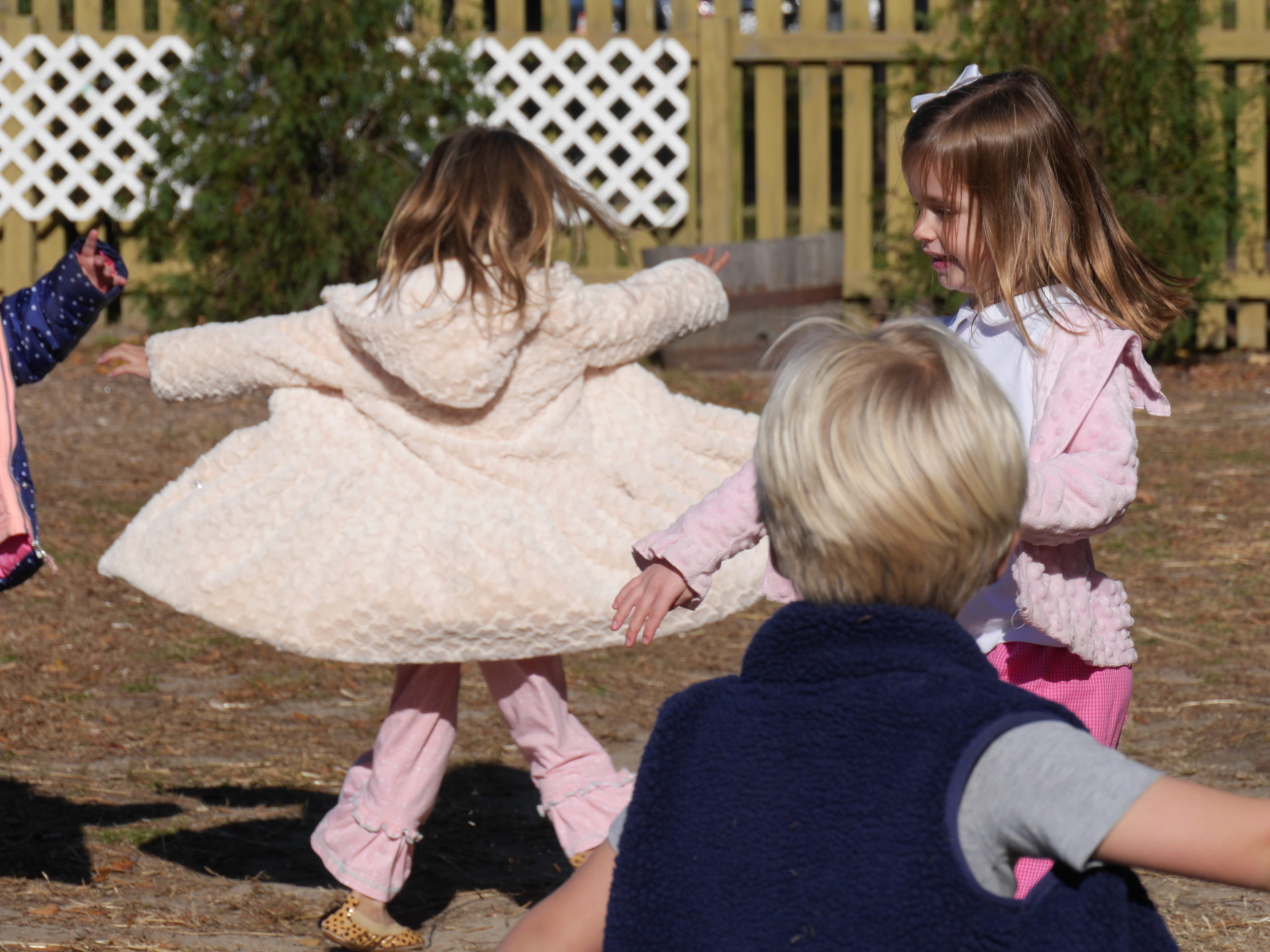Around and around and around and around! Log rolling down a hill, or arms out spinning around in a circle, whatever it takes to get dizzy, kids are wild about it. Even grown-ups remember delight in doing those things. But is it a good idea? The definitive answer is YES!
Spinning is a super good way to activate the vestibular system which technically controls the body’s balance and understanding of where it is and where it is going. According to this article, there are three main purposes of the vestibular system. First, the vestibular system helps the body stay upright, adjusting muscles, balance and nervous system to respond to imbalances and helps us recognize whether we are upside down or not. Second, it helps us sense motion and recognize space and our place in it and last it helps us control our eyes when the head is moving. Spinning is the greatest sensory input the brain takes in and processes and it needs to be exercised.
Spinning is a great way to challenge the vestibular system and reinforce it. Those who have studied spinning suggest that it is best only to spin in one direction until dizzy, stop, reorient and then go the other direction until dizzy. But generally speaking, most children have their own regulators and don’t go much past dizzy when they go in one direction and innately search for that reorientation before going again, in the opposite direction.
And the beauty is it can be a team, partner or individual experience! Spinning can happen alone, dancing, on the playground, with a swing, log rolling, with a partner… the options are endless!!!!
Extra Benefits? Heck Yeah!
What is most fascinating is that studies have proven that spinning has a direct impact on memory — as much as quadrupling memory abilities in some cases. In the study, when kids studied spelling words and then spun around, there was a significant improvement in their grades on the spelling tests post spin. What brought about the improvement was that kids who were left handed spun only to the left and right handed kids only to the right. In other words, spinning in the direction of the dominant hand improves memory.
Rocking can be very like spinning for the brain and any rocking movement kids can do is terrific for the development, memory as well as calming effects. Rocking toys like the bilobo are great for achieving these goals not to mention my personal favorite, core strength.
Spinning is also something to which we can adapt. I use spinning, with kids I teach and was overwhelmed by them when I first started. With time however, my brain has re-engaged, re-oriented and become used to the movement pattern.
All this being said, spinning is still not for everyone. Kids with processing disorders may backfire emotionally from spinning and it may not happen until hours later simply because the brain is still attempting to take stock of the input it received in the rotary overload.
Bottom line — for most kids (and adults) spinning is good for the body, brain and self! Have at it!
Photo by Liza Blackburn
